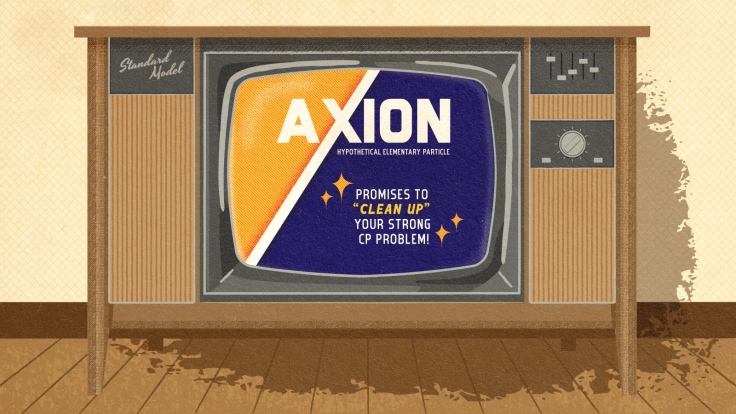SLAC first published this story on June 20, 2011.
The latest report on SESAME, a synchrotron light source that will be the first big international science center in the Middle East, says it is progressing both technically and financially on the road to its scheduled opening in 2015. At the May 30–31 meeting of the SESAME Council, member nations pledged both money and in-kind donations to help bridge a $35 million budget gap that stands in the way of completing the project and putting it into operation.
The status update comes in a press release from UNESCO, the United Nations Educational, Scientific and Cultural Organization, under whose auspices the research center was established.
SESAME stands for Synchrotron-light for Experimental Science and Applications in the Middle East. Many people from many countries have come together to make the project a reality, but the one who started it all was Herman Winick, a physicist at SLAC National Accelerator Laboratory.
When he learned in 1997 that a lab in Berlin was planning to scrap a synchrotron called BESSY I, Winick proposed recycling it instead as the centerpiece of the first synchrotron light source—and the first major international science center—in the Middle East. Working with Gus Voss of Germany’s DESY laboratory, he began to plan an upgraded facility that would draw scientists from all over the region, including countries that are politically at odds, for training and research, serving as a beacon of cooperation and progress. The project is modeled after CERN, the European particle physics center, which brought European scientists together in the aftermath of World War II. Current members of the SESAME Council are Bahrain, Cyprus, Egypt, Iran, Israel, Jordan, Pakistan, the Palestinian Authority and Turkey. Sir Chris Llewellyn-Smith, former Director-General of CERN, is the council president.
The Mideast needs a synchrotron light source “because it is a center of scientific excellence,” said Mukhles Sowwan, a Palestinian physicist from Al-Quds University in East Jerusalem who specializes in nanotechnology; he has been doing research at SLAC as a visiting professor since September 2010. The SESAME facility will provide powerful beams of X-rays for advanced research in a wide variety of scientific fields, including biology, chemistry, and earth, environmental and energy science. SESAME “will do good science, and eventually this will lead to more interaction between scientists of different countries” and promote peace in the region, Sowwan said: “Imagine Israelis working with Iranians, and Palestinians with Israelis, Jordanians with Turks. It’s amazing.”
He added that the project’s location in Jordan, on land donated by the Jordanian government, should allow researchers from the nine member countries to travel relatively freely between SESAME and their home institutions. And the first-class research opportunities available there will allow students to train locally, helping to reverse the brain drain that has seen many of the region’s best scientists leave to pursue careers abroad. In a new brochure, Sowwan and other Middle Eastern scientists describe the impact that SESAME has already had and is expected to have when research begins there.
SESAME has come a long way since Winick’s initial proposal. With the help of supporters and scientists from a number of nations, as well as from UNESCO and the International Atomic Energy Agency, the BESSY I injector system is being upgraded and installed in the SESAME building, which was donated by Jordan. It will inject electrons into a new 2.5 GeV main storage ring with a circumference of 436 feet. Electrons racing around the ring at nearly the speed of light will give off intense X-ray light, which will flow into beamlines filled with equipment where the experiments will take place. Construction of the ring is expected to start soon.
Five of those beamlines have been donated by the United Kingdom, and a number of labs in the United States and Europe are also providing gear. Two of the three major US equipment donations came from SLAC: a permanent-magnet undulator from the lab’s PEP storage ring, which was decommissioned in the late 1980s, and a double crystal X-ray monochromator, which selects specific wavelengths of X-rays for particular experiments. The third piece, a permanent-magnet wiggler, came from Lawrence Berkeley National Laboratory.
In addition, about $300,000 in funding from the US Department of Energy’s Office of Basic Energy Sciences has allowed about 25 researchers from the Middle East to come to SLAC and other US synchrotron labs for research and training, Winick said—a vital part of building the base of expertise needed to run the new facility.
Earlier this month, the US Liaison Committee for IUPAP, the International Union for Pure and Applied Physics, agreed to provide additional travel support for SESAME researchers, instructors and students. And the project recently received its first substantial support from a private foundation—a $100,000 training grant from the Richard Lounsbery Foundation. These are just the latest in a series of contributions for travel and training from many sources, including the Japanese Society for the Promotion of Science, foundations, companies, professional scientific societies such as the American Physical Society, and synchrotron radiationlaboratories around the world.
Related Links
- “SESAME,” symmetry magazine
- “Science and peace,” commentary by Herman Winick
- “Middle East accelerator project approaches barrier” symmetrybreaking
- The SESAME website, which includes a downloadable brochure







